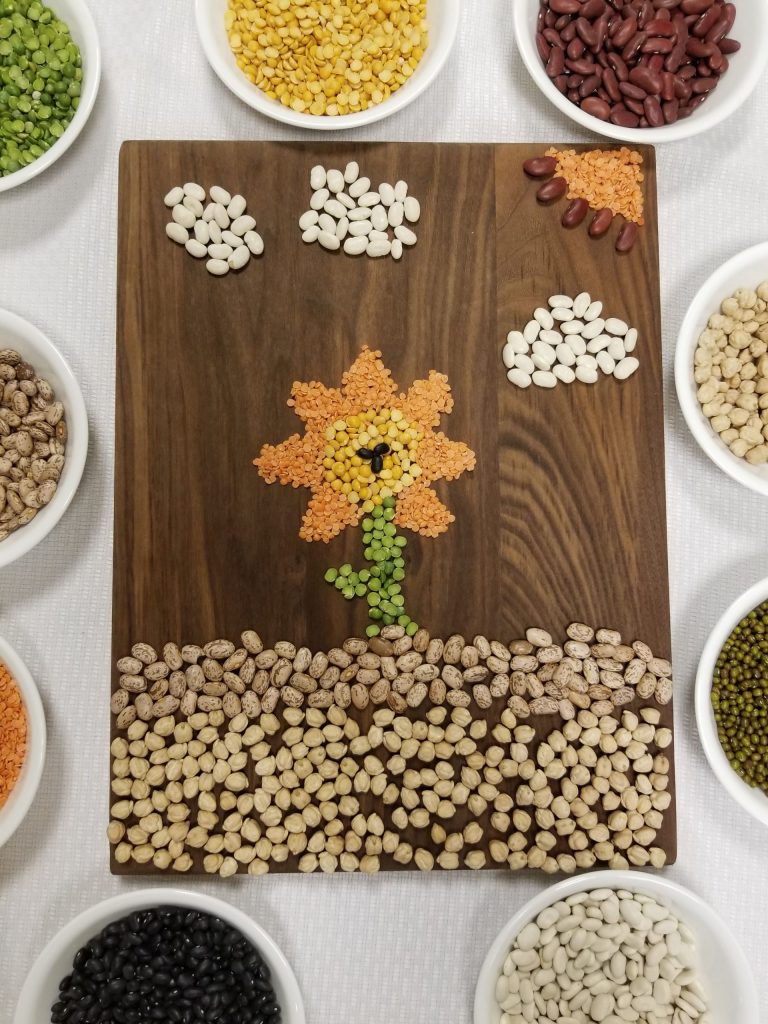Beans and pulses are delicious, nutritious, and affordable. Domesticated 8,000-10,000 years ago in the Americas, these staple foods star in many traditional recipes from around the globe. They are associated with numerous health benefits, such as gut health, a reduced risk for chronic disease, and weight maintenance. Follow the tips below for ideas on how to prepare and enjoy these versatile nutritional powerhouses.

Beans, Legumes, and Pulses: What is the Difference?
You may have heard beans referred to as legumes or pulses. Do all these words mean the same thing?
- Legumes: Beans belong to the legume family, Leguminosae. However, the legume family is broad and includes oil-rich seeds like peanuts and soybeans, as well as feed crops like alfalfa.
- Pulses: Pulses are the dried edible seeds of grain legumes and are naturally low in fat. They do not include oil-rich legumes like soybeans. The most popular types are dry beans, chickpeas, dry peas, and lentils.
- Beans: Dry beans are a type of pulse. There are many varieties of beans, including black, pinto, red kidney, and white kidney (cannellini).

Preparing
Although canned beans and pulses are popular, cooking dried beans can be a more economical option. Also, a greater variety of dried varieties is often available compared to canned, especially in stores with a bulk section.
Soaking
- Sort and rinse 1 pound of dried beans (the usual amount sold bagged in grocery stores). Discard damaged beans.
- In a large container, dissolve 1.5 tablespoons of salt in 8 cups of cool tap water.
- The salt can greatly reduce cooking time and help improve the texture, flavor, and appearance of beans.
- Add beans to the container. They will expand, so make sure the water level is a few inches above the beans.
- Soak 8-12 hours (overnight) at room temperature. If soaking for longer, refrigerate until ready to cook.
- Drain and rinse with clean water.
- Note: Some pulses do not need to be soaked, such as lentils.
Cooking
- After rinsing, add beans to approximately 6 cups of fresh water with ½ teaspoon of salt (optional), and cook via your preferred method – stove top, slow cooker, or pressure cooker. Cook until soft.
- The amount of water and cooking time can vary based on your cooking method and the type of bean. Refer to the recipe, package label, and/or cooker instructions.
- At higher elevations you may also need to increase the cooking time, as most recipes are formulated at sea level.
Storing
- Store canned and dried beans and pulses in a cool, dark, and dry place. Use hard, closed containers to protect from pests.
- Refrigerate leftovers within 2 hours and use or freeze within 4 days.

Enjoying
Dishes like chili, baked beans, and split pea soup are classics. However, with so many different types of beans and pulses available, it can be fun to experiment with new recipes. Here are some ideas to get creative in the kitchen and help you reap all the benefits pulses have to offer:
- Blend beans with other ingredients to boost the nutrition or to thicken sauces or soups.
- Toss cooked beans into salads.
- Drain, rinse and mix together a variety of canned beans, corn, and green or wax beans. Toss with a simple vinegar and oil dressing for a quick and easy multi-bean salad.
- Roast chickpeas for a crisp salad topping or snack.
- Mix beans and whole grains as the base for a homemade grain bowl.
- Make your own bean burgers.
- Think beyond hummus. How about a spicy red lentil dip?
- Try foods made with bean powders, like black bean pasta or chickpea orzo.
What About Flatulence?
Some people avoid beans for fear of abdominal discomfort or gas. However, studies have indicated that this complaint may be an overexaggerated issue and many people do not experience increased flatulence. Also, most of those people who initially experience gas adjust quickly to a higher fiber diet and symptoms go away.
For more tips and recipes, visit the American Pulse Association.



